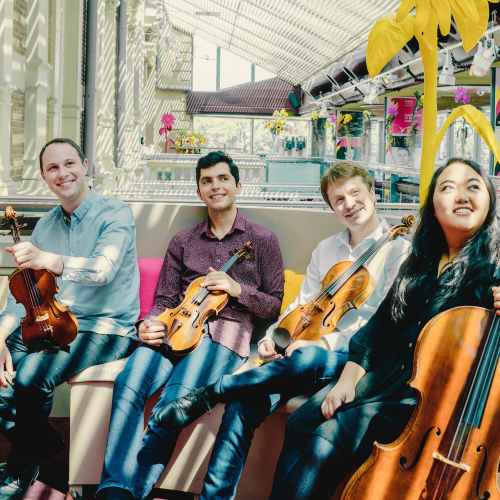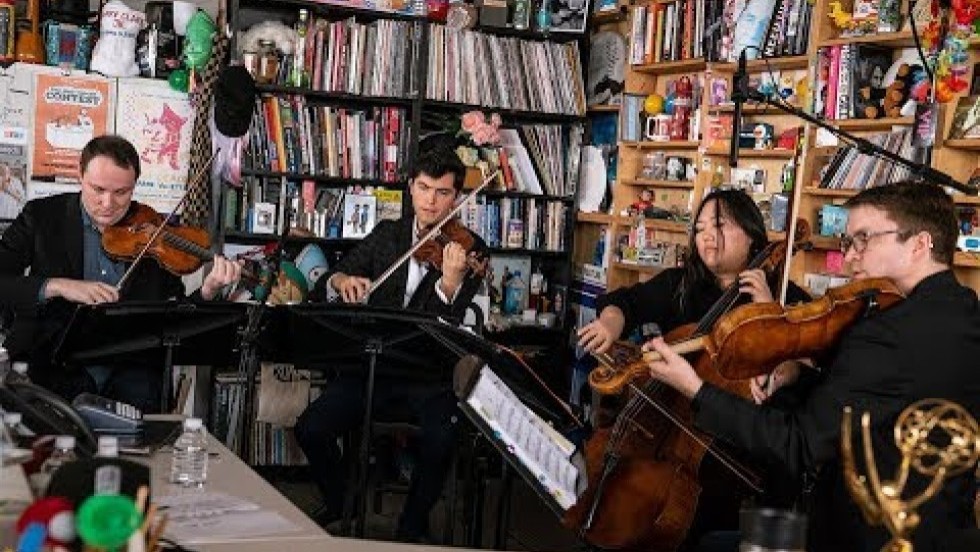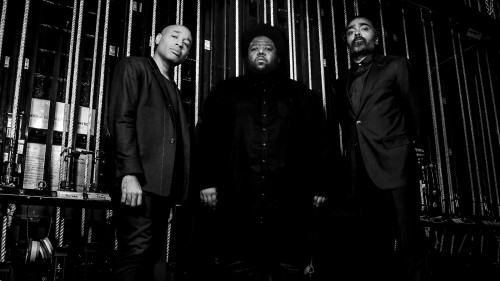
Calidore String Quartet
Cookie Notice
This site uses cookies to measure our traffic and improve your experience. By clicking "OK" you consent to our use of cookies.
The Calidore Quartet makes a return appearance at the Series during an exciting phase of their career. With over a decade of shared experiences, this relatively young group has cultivated a deep chemistry and musical kinship that demonstrates “the kind of sublimity other quartets spend a lifetime searching [for]” (Los Angeles Times).
“The Calidore Quartet has] deep reserves of virtuosity and irrepressible dramatic instinct ”
The New York Times
Program Details
One intermission to follow "Strum"
Beethoven began writing string quartets in the 1790s, taking his lead from his onetime teacher Haydn and his late hero Mozart. The six quartets that Beethoven gathered for publication in 1800 showed how well the young composer had mastered the suave tyle that came before him, but his own great ambitions and his changing life circumstances ensured that his craft would never stagnate.
Within the “middle” period of his career, when Beethoven drilled down on the essence of the smallest musical kernels, 1809 was a highly significant year. It was a dismal time in Vienna, when Napoleon’s army bombarded the city—sending Beethoven into a basement to cover his ears with pillows in the hopes of saving the last of his hearing—and the subsequent occupation scattered the elites and upended concert life. At the same time, Beethoven leveraged a job offer from the enemy camp to secure a sweetheart deal: his friend and student Archduke Rudolf joined with two princes to guarantee Beethoven a fixed annual salary and pension, as long as he stayed in Vienna.
The String Quartet in E-flat Major that Beethoven wrote in 1809 was dedicated to one of those patrons, Prince Lobkowitz. In some respects, the gentle-natured music could seem like a regression to Beethoven’s early style, marking a pause between the radical expansion of the “Razumovsky” Quartets of 1806 and the equally radical compression of the “Serioso” Quartet from 1810. Yet under the surface, this string quartet in a mellow key with a sweet nickname has plenty of adventure embedded within.
After a patient introduction filled with some juicy dissonances, the fast body of the movement makes it clear right away that superimposed layers of melody and handoffs that split lines between separate parts will be key thematic elements. The most famous manifestation of this is the plucking that passes between instruments, earning this quartet its “harp” nickname.
The leisurely slow movement that comes next is an exercise in restraint, with its placid main theme returning consolingly after each of the two contrasting episodes. The scherzo swings the opposite direction with a jumpy motive in the related key of C-minor, which shows, in its short-short-short-long rhythmic pattern, a family resemblance to the Fifth Symphony completed a year earlier. A whispered coda links directly to the finale, which unfurls as a charming theme and variations that plays up the quirks of phrasing that come from starting with a half-measure.
© Aaron Grad, 2025
Beethoven began writing string quartets in the 1790s, taking his lead from his onetime teacher Haydn and his late hero Mozart. The six quartets that Beethoven gathered for publication in 1800 showed how well the young composer had mastered the suave tyle that came before him, but his own great ambitions and his changing life circumstances ensured that his craft would never stagnate.
Within the “middle” period of his career, when Beethoven drilled down on the essence of the smallest musical kernels, 1809 was a highly significant year. It was a dismal time in Vienna, when Napoleon’s army bombarded the city—sending Beethoven into a basement to cover his ears with pillows in the hopes of saving the last of his hearing—and the subsequent occupation scattered the elites and upended concert life. At the same time, Beethoven leveraged a job offer from the enemy camp to secure a sweetheart deal: his friend and student Archduke Rudolf joined with two princes to guarantee Beethoven a fixed annual salary and pension, as long as he stayed in Vienna.
The String Quartet in E-flat Major that Beethoven wrote in 1809 was dedicated to one of those patrons, Prince Lobkowitz. In some respects, the gentle-natured music could seem like a regression to Beethoven’s early style, marking a pause between the radical expansion of the “Razumovsky” Quartets of 1806 and the equally radical compression of the “Serioso” Quartet from 1810. Yet under the surface, this string quartet in a mellow key with a sweet nickname has plenty of adventure embedded within.
After a patient introduction filled with some juicy dissonances, the fast body of the movement makes it clear right away that superimposed layers of melody and handoffs that split lines between separate parts will be key thematic elements. The most famous manifestation of this is the plucking that passes between instruments, earning this quartet its “harp” nickname.
The leisurely slow movement that comes next is an exercise in restraint, with its placid main theme returning consolingly after each of the two contrasting episodes. The scherzo swings the opposite direction with a jumpy motive in the related key of C-minor, which shows, in its short-short-short-long rhythmic pattern, a family resemblance to the Fifth Symphony completed a year earlier. A whispered coda links directly to the finale, which unfurls as a charming theme and variations that plays up the quirks of phrasing that come from starting with a half-measure.
© Aaron Grad, 2025
Jessie Montgomery began classical violin lessons at age four, but she learned just as much from the days she spent at her father’s rehearsal studio for rock and jazz bands in Manhattan’s East Village. Since studying violin performance at the Juilliard School and film scoring at New York University, she has established herself as an essential composer, performer, and educator within New York’s dynamic music scene.
A true musician’s musician, Montgomery leans on her history of playing orchestral and chamber music at the highest level to craft scores that feel as good to perform as they sound. Strum, one of her most often-played compositions, has gone through many iterations since it was first conceived in 2006 as a string quintet with two cellos. She tailored it into a string quartet version with revisions in 2008 and 2012, and it became a marquis piece for the Catalyst Quartet of which Montgomery was a founding member, with their recording serving as the title track of her debut album in 2015.
The primary driver for the piece is a strumming gesture, with the string players plucking both up and down in the manner of a guitar. “Drawing on American folk idioms and the spirit of dance and movement,” Montgomery wrote in a program note, “the piece has a kind of narrative that begins with fleeting nostalgia and transforms into ecstatic celebration.”
© Aaron Grad, 2025
Jessie Montgomery began classical violin lessons at age four, but she learned just as much from the days she spent at her father’s rehearsal studio for rock and jazz bands in Manhattan’s East Village. Since studying violin performance at the Juilliard School and film scoring at New York University, she has established herself as an essential composer, performer, and educator within New York’s dynamic music scene.
A true musician’s musician, Montgomery leans on her history of playing orchestral and chamber music at the highest level to craft scores that feel as good to perform as they sound. Strum, one of her most often-played compositions, has gone through many iterations since it was first conceived in 2006 as a string quintet with two cellos. She tailored it into a string quartet version with revisions in 2008 and 2012, and it became a marquis piece for the Catalyst Quartet of which Montgomery was a founding member, with their recording serving as the title track of her debut album in 2015.
The primary driver for the piece is a strumming gesture, with the string players plucking both up and down in the manner of a guitar. “Drawing on American folk idioms and the spirit of dance and movement,” Montgomery wrote in a program note, “the piece has a kind of narrative that begins with fleeting nostalgia and transforms into ecstatic celebration.”
© Aaron Grad, 2025
Growing up in a musical family, Franz Schubert played string quartets at home, and he wrote a number of his own examples as a teenager, emulating the tidy and refined style of Haydn. Later, during his all-too-short adult life, he completed three extraordinary quartets that showed how far his experimentation and emotional intensity had come. In between stands one curious work from 1820, consisting of a single complete movement of a quartet in C minor (heard today) and 41 measures of the Andante that would have come next (not performed today). Schubert started and abandoned loads of pieces amid a career full of disappointments and fizzled leads, so we can count ourselves lucky to at least have this quartet movement (or, in German, Quartettsatz), which finally reached the public in 1870 in an edition prepared by Brahms.
The Quartettsatz is unsettled and tremulous, both on its surface and within its deeper architecture. The fluttering opening music makes a frightful climb to a bracing, unexpected chord, without ever landing on a real melody in the home key of C minor. The sweetest tune arises in a detour to A-flat major, and then it breaks off suddenly, as if a pleasant daydream snaps back to a harsh reality. For listeners versed in the tidy architecture of sonata-allegro form, this music frustrates all the normal expectations without quite breaking any rules. It took decades for tastes to catch up, but now we rightfully celebrate Schubert’s idiosyncratic genius.
© Aaron Grad, 2025
Growing up in a musical family, Franz Schubert played string quartets at home, and he wrote a number of his own examples as a teenager, emulating the tidy and refined style of Haydn. Later, during his all-too-short adult life, he completed three extraordinary quartets that showed how far his experimentation and emotional intensity had come. In between stands one curious work from 1820, consisting of a single complete movement of a quartet in C minor (heard today) and 41 measures of the Andante that would have come next (not performed today). Schubert started and abandoned loads of pieces amid a career full of disappointments and fizzled leads, so we can count ourselves lucky to at least have this quartet movement (or, in German, Quartettsatz), which finally reached the public in 1870 in an edition prepared by Brahms.
The Quartettsatz is unsettled and tremulous, both on its surface and within its deeper architecture. The fluttering opening music makes a frightful climb to a bracing, unexpected chord, without ever landing on a real melody in the home key of C minor. The sweetest tune arises in a detour to A-flat major, and then it breaks off suddenly, as if a pleasant daydream snaps back to a harsh reality. For listeners versed in the tidy architecture of sonata-allegro form, this music frustrates all the normal expectations without quite breaking any rules. It took decades for tastes to catch up, but now we rightfully celebrate Schubert’s idiosyncratic genius.
© Aaron Grad, 2025
Erich Korngold is best remembered for his role in reshaping the art of film scoring by borrowing techniques from grand opera. Born in Moravia (now part of the Czech Republic) and raised in Vienna, where his father was an influential music critic, Korngold developed into a child prodigy of the highest order, hailed as a genius by Mahler, Strauss, and countless others. By the age of thirty, Korngold had completed four operas and was teaching in Vienna. He scored his first film in 1934 and continued to shuttle between Europe and California for several years, but after the runaway success of The Adventures of Robin Hood (which won the Oscar for Best Original Score), and in light of the Nazi annexation of Austria in 1938, Korngold settled permanently in the United States.
In 1944, after years of putting all of his composing energy into whichever films the Warner Brothers studio assigned him, Korngold was itching to return to crafting his own concert music. He drafted his Third String Quartet that year—his first foray into chamber music since the Second Quartet 11 years earlier—and finished it in 1945, the same year he completed the Violin Concerto that has become his most well-known concert score. Both of these works borrowed themes from his film scores, at a time when he figured that those movies containing some of his best work would soon be forgotten.
There are no film cues embedded in the first movement of the quartet, and its tonally ambiguous main theme seems to transport Korngold back to the Vienna he left behind, steeped in both the clarity of the Haydn-Mozart-Beethoven lineage and the dissolution of old harmonic rules spearheaded by Schoenberg. The Scherzo also revels in disorienting leaps and uprooted melodies, but here the effect is cheeky and self-effacing. The central trio section counters with slow and sweet music extracted from the score for Between Two Worlds.
The hushed slow movement starts with the instruction to play it “like a folk tune,” but the melody is actually borrowed from another film cue, this one from The Sea Wolf. The thrilling finale has the neoclassical sparkle of Stravinsky, the raw muscularity of Bartók, and plenty of Korngold’s own innate showmanship, including snippets borrowed from the film score for Devotion.
© Aaron Grad, 2025
Erich Korngold is best remembered for his role in reshaping the art of film scoring by borrowing techniques from grand opera. Born in Moravia (now part of the Czech Republic) and raised in Vienna, where his father was an influential music critic, Korngold developed into a child prodigy of the highest order, hailed as a genius by Mahler, Strauss, and countless others. By the age of thirty, Korngold had completed four operas and was teaching in Vienna. He scored his first film in 1934 and continued to shuttle between Europe and California for several years, but after the runaway success of The Adventures of Robin Hood (which won the Oscar for Best Original Score), and in light of the Nazi annexation of Austria in 1938, Korngold settled permanently in the United States.
In 1944, after years of putting all of his composing energy into whichever films the Warner Brothers studio assigned him, Korngold was itching to return to crafting his own concert music. He drafted his Third String Quartet that year—his first foray into chamber music since the Second Quartet 11 years earlier—and finished it in 1945, the same year he completed the Violin Concerto that has become his most well-known concert score. Both of these works borrowed themes from his film scores, at a time when he figured that those movies containing some of his best work would soon be forgotten.
There are no film cues embedded in the first movement of the quartet, and its tonally ambiguous main theme seems to transport Korngold back to the Vienna he left behind, steeped in both the clarity of the Haydn-Mozart-Beethoven lineage and the dissolution of old harmonic rules spearheaded by Schoenberg. The Scherzo also revels in disorienting leaps and uprooted melodies, but here the effect is cheeky and self-effacing. The central trio section counters with slow and sweet music extracted from the score for Between Two Worlds.
The hushed slow movement starts with the instruction to play it “like a folk tune,” but the melody is actually borrowed from another film cue, this one from The Sea Wolf. The thrilling finale has the neoclassical sparkle of Stravinsky, the raw muscularity of Bartók, and plenty of Korngold’s own innate showmanship, including snippets borrowed from the film score for Devotion.
© Aaron Grad, 2025
Featured Artists
Photos
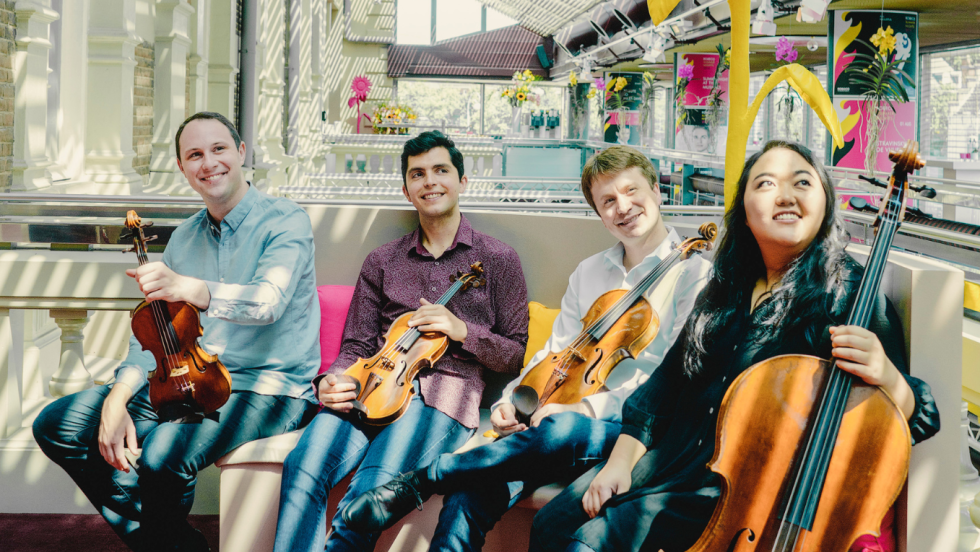
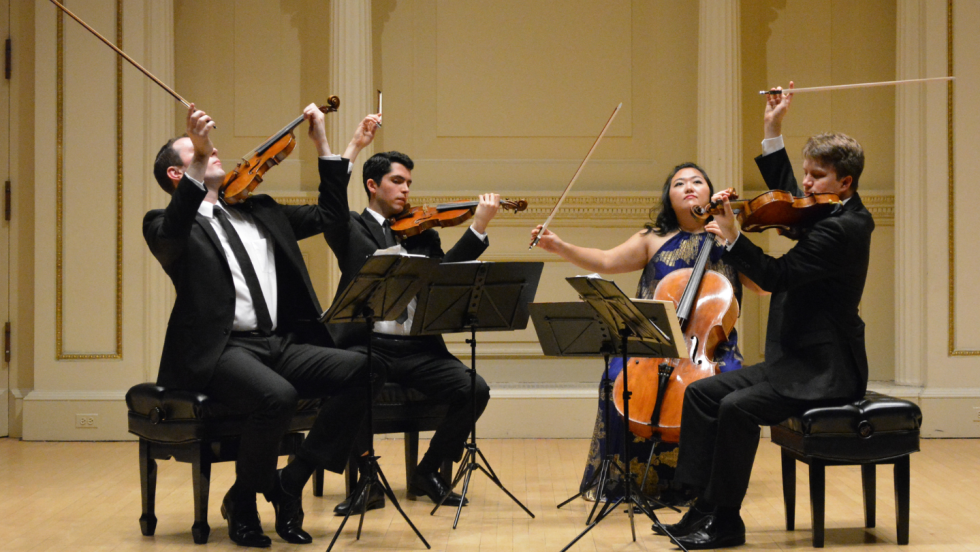
The Calidore String Quartet perform at Carnegie Hall


The Calidore String Quartet perform at Carnegie Hall
NEC's Jordan Hall Venue Information
Related Events

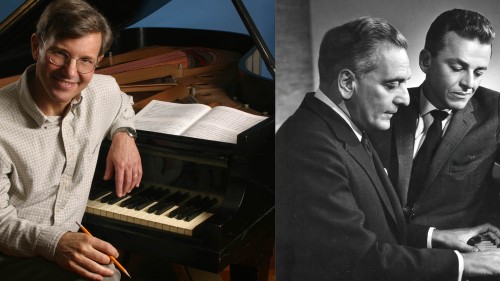
What Makes It Great? with Rob Kapilow
Songs from My Fair Lady, Camelot, and Brigadoon: Lerner & Loewe’s Greatest Hits
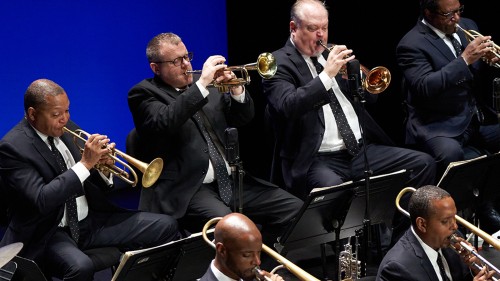
Jazz at Lincoln Center Orchestra with Wynton Marsalis (2026)
Duke in Africa
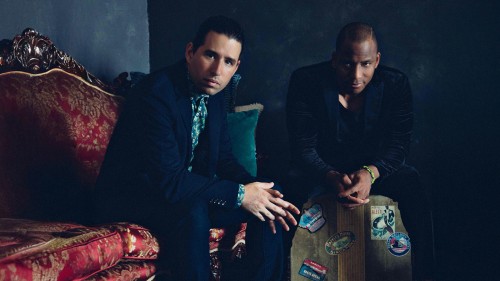
Alfredo Rodriguez & Pedrito Martinez
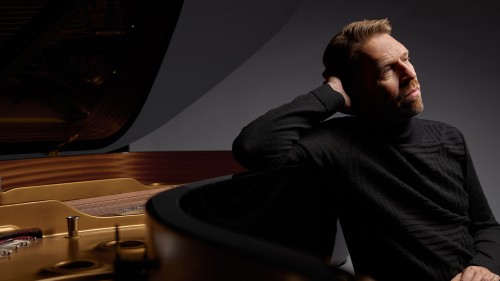
Leif Ove Andsnes, piano
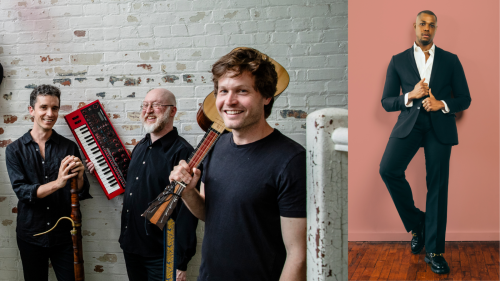
Ruckus and Davóne Tines
What is Your Hand in This?
Stay in touch with Celebrity Series of Boston and get the latest.
Email Updates Sign up for Email Updates